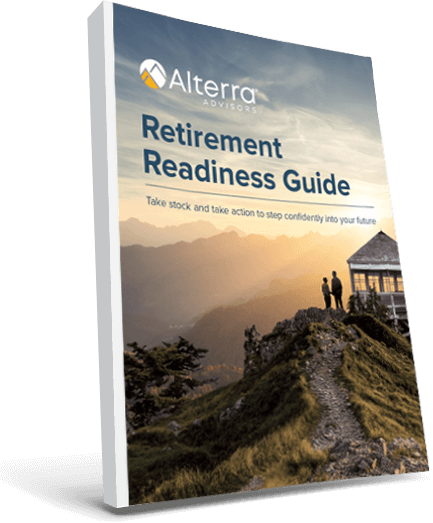You’ve dreamed big, planned carefully, invested well, and you’re ready to enjoy life in retirement! Then the looming questions come, putting a damper on your enthusiasm: what about healthcare? How much will insurance cost? What about unexpected hospital stays? What if I need long term care?
If you’re worried about how medical costs will affect your retirement, you’re not alone. A 2019 PwC Employee Financial Wellness Survey found that 61% of Baby Boomers, 70% of Generation X, and 73% of Millennials share your concern.
Planning for healthcare in retirement is especially difficult because it varies so widely by person. Some are relatively healthy throughout their elder years while others have ongoing challenges that drive costs up. Though it’s hard to predict exactly what your health expenses will be, you can prepare for the probable and make a plan for the unexpected.
How much does healthcare cost in retirement?
HealthView Services estimates that a healthy 65-year-old couple would spend $12,286 per year on health costs in 2019, with inflation increasing that number to $34,268 in 2039 at age 85.
Considered another way, Fidelity’s Retiree Healthcare Cost Estimate shows that a 65-year-old couple would average $315,000 in retirement health costs – $150,000 for men and $165,000 for women. This doesn’t include long-term care, which can exceed $100,000 per year in many cases.
Regardless of how you look at it, health costs are likely to be a significant part of your retirement budget. So how can you plan for them?
5 parts of a complete retirement healthcare plan
1. Plan for health insurance
By age 65, Medicare provides primary health insurance coverage for most retirees. Wondering what you need to know about Medicare if you’re turning 65? Here’s our step-by-step guide! If you’re retiring before age 65, you’ll need a plan to bridge the gap before you’re Medicare eligible. Fidelity outlines the four most common options:
- COBRA. This is an extension of employer benefits, but usually not subsidized by your employer and can be very expensive.
- Spouse’s plan. If you have a working spouse, many employer plans allow for a spouse to join. If you’re in this fortunate position, it can be the most cost-effective way to pay for coverage before Medicare.
- Public marketplace. Established by the Affordable Care Act, this provides coverage options for those not yet Medicare eligible. Costs vary because government subsidies are offered based on income.
- Private insurance. These plans can be found through a local health insurance agent, professional association, or other private exchange. A health insurance agent is a good place to start because they can guide you based on your best local options.
2. Plan annual spending into your budget
When you set your retirement spending target, include an estimate like HealthView Services’ annual estimate, the same way you might include an annual estimate for travel. This ensures that an average level of spending won’t break your budget. If you end up with much higher healthcare costs, this increased expense is likely to be partially offset by lower spending on travel and leisure as you shift focus to addressing health concerns.
3. Keep reserves for the unexpected
Your retirement plan should include room for unplanned expenses, whether they come in the form of healthcare costs or home repairs. As we discuss in Understanding Retirement Income, factor this into planning your “safety bucket” that holds your emergency reserve.
4. Plan for long-term care
In addition to regular healthcare costs, consider how you would pay for long-term care expenses. According to LongTermCare.gov, average costs vary based on level of need:
- $119 a day or $3,628 per month for care in an assisted living facility (for a one-bedroom unit)
- $225 a day or $6,844 per month for a semi-private room in a nursing home
- $253 a day or $7,698 per month for a private room in a nursing home
- $20.50 an hour for a health aide
- $20 an hour for homemaker services
- $68 per day for services in an adult day health care center
Some choose to plan to pay these costs out of pocket by earmarking a portion of your nest egg for long-term care, while others purchase long-term care insurance to offset this risk. For more on this topic, see Is Long-Term Care Insurance Right for You?
5. Save into a Health Savings Account
When it comes to preparing for health expenses, a Health Savings Account (HSA) is a great strategy if you have access to it. As we cover in 3 Tips to Maximize Your HSA, these accounts give you a triple tax advantage:
- Contributions are tax deductible
- Investment earnings in the account are tax free
- Withdrawals for qualified healthcare costs are tax free
Your health is among your greatest assets and a plan for healthcare costs is a must have in your overall financial plan. It’s common to experience fear and anxiety if you don’t feel prepared. But with a well-crafted plan for healthcare in retirement, you can sleep soundly with the confidence that you’ve prepared for the expected and unexpected alike.
The “Alterra” name was coined by joining the Latin roots “alter”, the origin of the word “altruism” with “terra” meaning earth or land. This name reflects the company philosophy of “clients before profits” and providing firmly grounded advice.


